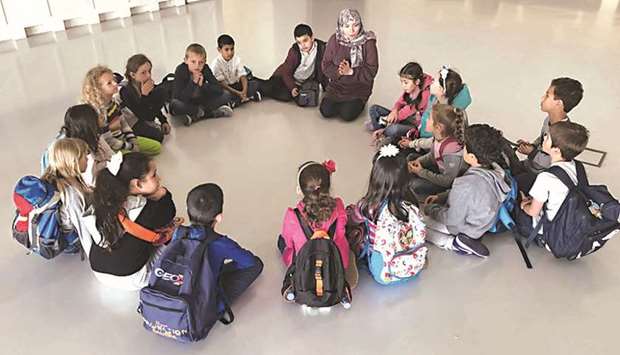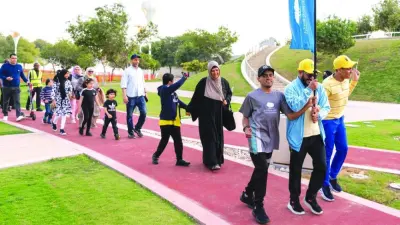Following the success of the 2017 edition, which saw more than 2,000 students explore Mathaf: Arab Museum of Modern Art, the museum has relaunched its school engagement programme for 2018.
The initiative demonstrates Qatar Museums’ (QM), and its chairperson HE Sheikha Al Mayassa bint Hamad bin Khalifa al-Thani’s commitment to ensuring that education is at the heart of programming for every entity under its umbrella.
As part of this commitment, Mathaf hosts regular educational and community programmes that stimulate creativity and appreciation of modern and contemporary art in the region. During the visits, Mathaf educators lead interactive, theme-based lessons that explore three to four works of art in depth through discussion and creative work in the galleries.
The lessons and information shared during the visits are aligned with the new Ministry of Education and Higher Education Art Curriculum Standards and are open to both local independent and international schools. The visits, which are accompanied by briefings in both English and Arabic, are free of charge and available to students from kindergarten to grade 12.
Museum visits develop students’ observation, communication and critical thinking skills through thematic lessons and activities designed to link to the curriculum and encourage students to look at the world through the eyes of an artist. Mathaf accepts two visits a day from Sunday to Thursday through June 2018 between 9am and 11am for groups of up to 25 students.
Teachers have to book the visits in advance in their preferred language by using the online booking form found on the Mathaf website.
Last year, Mathaf presented a rehang of the entire permanent collection galleries, offering students a rich new landscape for learning and exploration.
Titled Mathaf Collection, Summary, Part 2, the new interpretation of the museum’s extensive collection brought together landmark artists and pivotal works that redefine modern and contemporary art practices and historical narratives.
The updated Mathaf collection reflects a number of important defining moments in Arab history and artistic innovations in the region, contributing an original perspective to local and global conversations about art and society.

A Mathaf educator leads an interactive, theme-based lesson with a group of students.


